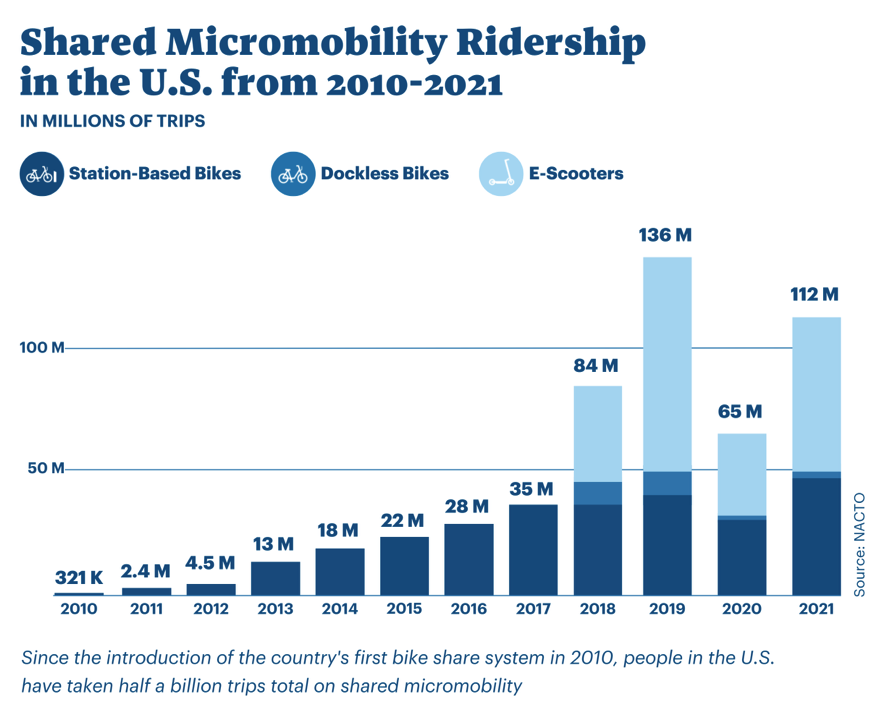
The National Association of City Transportation Officials (NACTO) has just published this report on shared micro mobility in the US from 2010 to 2021. And it’s a good look at how this space has evolved over the years. According to the report, the first modern North American bike share system was installed in Montréal in 2009 and the first in the US was in 2010. Though a quick Google search has Washington DC claiming this title in 2008.
Whatever the case may be, bike share ridership started somewhere around 321k per year in the US and trip volume is now close to 50 million per year. Electric scooters also joined the mix in 2018, and 2019 was a banner year for this mode of transportation. The report suggests this was due to cheap VC money subsidizing these rides. Electric scooters have seen their average trip cost 2x between 2018 ($3.50) and 2021 ($7), despite the average trip distance remaining more or less flat (1.3 to 1.2 miles).
Naturally, the pandemic was bad for shared mobility. But it is interesting to see how much this space has rebounded and how resilient it seems to be. Prior to the pandemic, bike share usage had clear morning and evening peaks, coinciding with people commuting to work. Since then, we have seen a shift to both a wider range of trips (i.e. to do things like get groceries) and more trips throughout the day.
To download a full copy of the report, click here.

Meanwhile, in Toronto we continue to make the experience for micromobility users, in particular escooters, as miserable as possible with ignorant policy, half assed infrastructure investment and implementation, all driven by a fear of affecting the experience of car drivers. The irony is this approach comes at the expense of vibrant street retail and a truly urban and locally focused experience.
LikeLike